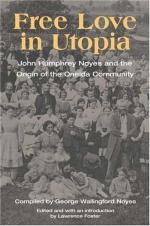|
This section contains 1,950 words (approx. 7 pages at 300 words per page) |

|
Continuity.
A few faiths had organizational systems that were not torn apart before the Civil War and therefore did not suffer a difficult period of reunion. Jews, for example, had a congregational polity in which each synagogue or temple usually shared the morality of its location. Catholicism had a different polity but the same outcome. Its unity, centered in Rome and not on American nationalism, survived the war. The Protestant Episcopal Church had an organizational structure which seemed to put it at risk because it was led by a national body of bishops. When the Civil War began, it followed the division between the two nations. However, right after the war ended, the reunited Protestant Episcopal Church met, receiving delegates from the former Confederate States of America without problem. Thereafter, the Episcopalians did not divide over sectional issues, but over the degree of ritualism to...
|
This section contains 1,950 words (approx. 7 pages at 300 words per page) |

|




